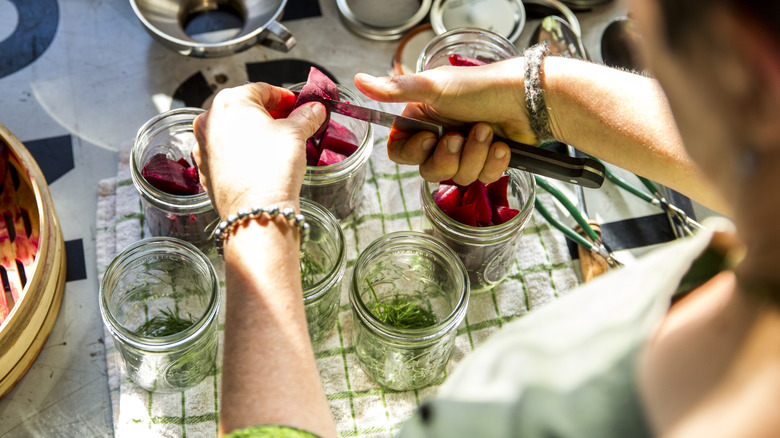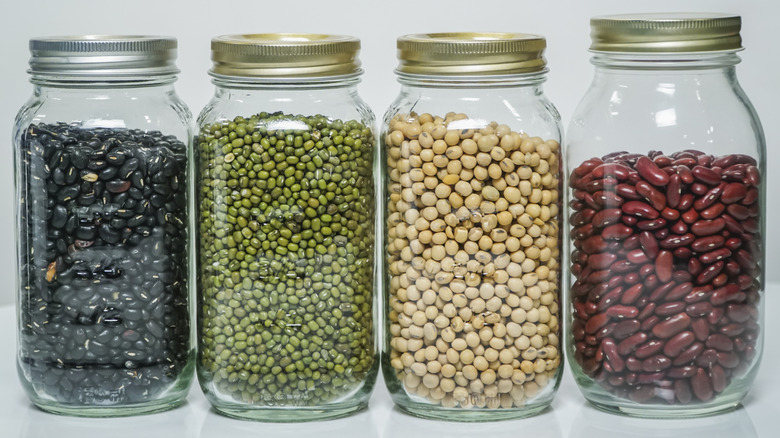Why Dry Canning Food Can Be Extremely Dangerous
Canning is one of the best ways to store food for a long period of time, and it's super rewarding to be able to preserve your own food. Plus, you can even use canning rings to make perfectly round cookies for a snack because canning is hard work. However, it's crucial to remember that any method of canning comes with risks if not done correctly. This is why it is so important to learn how to tell when your home-canned goods have spoiled. That said, some methods can be much more dangerous than others, such as dry canning.
To be clear, there are two main methods of dry canning people usually refer to: preserving dry foods like pasta and beans in a canning jar (which isn't technically canning), and canning raw vegetables without any liquid. Now, under absolutely no circumstance should you ever try canning vegetables without adding liquid. According to the USDA, trying to do this is dangerous and dramatically increases the risk of botulism. This bacteria and its heat-resistant spores are notably more susceptible to wet heat than dry, and adding liquid allows more heat to be distributed evenly throughout the jar during canning, making it easier for bacteria to be killed.
Without this method of heat transfer, bacteria can linger and flourish. Even more terrifying, because the toxin produced by C. botulinum bacteria doesn't alter the appearance of food, it's possible to ingest it after canning without knowing — and even the smallest amount can cause severe illness. Typically, you'd toss your canned goods if they were leaking, foamy, or otherwise damaged, but many of these signs can be missed without liquid.
Don't think about dry canning dry foods either
While dry canning things like vegetables is dangerously unsafe, some might assume that the method could better be used for dry foods like beans, nuts, and flour. Unfortunately, dry canning dry foods presents numerous risks as well. For one, this method often heats the jars in an oven at around 200 degrees Fahrenheit. However, there is no evidence that this is hot enough to truly sterilize the food inside the jars. Moreover, because there is no liquid in the jars, oxygen remains, and condensation can begin to form over time. Every type of food — even those we think of as dry — contains some amount of water, and it doesn't take a lot to facilitate the growth of harmful bacteria when things aren't sterile.
What's more, by heating some dry goods in an effort to dry can them, you could be degrading their overall quality. This is particularly true for things like nuts, which contain fats that could go rancid after heating. The best place to store nuts is in your fridge alongside your flour. (Though flour can also be frozen for freshness.) Similarly, dried beans do perfectly fine in an airtight container or in your freezer. All things considered, dry canning is totally unnecessary to preserve dry goods — and all it does is make you more likely to get sick from eating them.

